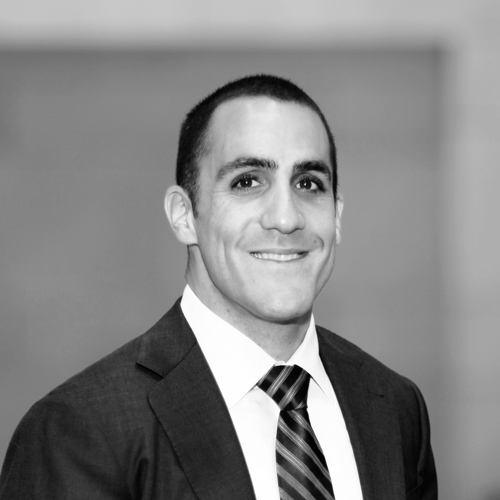
Vehicle manufacturing has changed dramatically in the past fifty years. From touchscreen GPS devices to self-driving capability, cars have become increasingly technologically sophisticated, and as the technologies within them have changed, so has the way those technologies are patented and marketed. “Patents are not tools just for engineers,” says John Cheek, chief IP counsel at Tenneco Inc., a global manufacturer of clean-air and ride-performance products for commercial and light vehicles. “They’re tools for the commercial teams to help explain to customers why our proprietary products are better and that you can’t get the same thing from the competition.”
Since joining Tenneco in January 2017, Cheek has been streamlining the company’s patenting processes to better align its IP strategy with its overall business strategy. The first step is deciding what to patent.
Tenneco built its reputation on its ability to develop, manufacture, and launch high-volume, reliable mechanical products such as mufflers and shock absorbers, and marketers have often emphasized the company’s reliability and expertise in manufacturing. “Tenneco was better at making mousetraps than others,” Cheek says. But today, Tenneco has transitioned to become a technology company with products ranging from electronic engine emissions-control solutions to fully active vehicle suspensions, considered to be enabling technology for autonomous vehicles. “Today, we still have to be the best at making mousetraps,” Cheek says, “but that mousetrap needs to be proprietary so that we can better sustain our competitive advantage.”
Historically, Tenneco’s patent function had been housed within its engineering department, led by a patent engineer working without outside lawyers. In 2013, Tenneco hired its first dedicated patent attorneys, but when Cheek joined, much of the onus for driving patent filings and risk management still fell on the engineers. And with regards to patent risk management, technology teams were expected to ask the patent department to perform a freedom-to-operate analysis when developing a new product or technology, meaning they had to decide which patents to ask for in which countries. “That’s a tall task for an engineer leading a complex project with a crowded global patent landscape,” Cheek says.
For patent filings, engineers were expected to complete extensive documentation of their inventions before beginning complicated, multistage reviews and approval processes for patent-filing decisions. “Those two things together conspired to create a precipitous drop in the amount of invention disclosures that were coming through the system,” Cheek says.
Cheek has been introducing a proactive process in which the IP team gathers business and technical information from subject-matter experts and chooses which technological aspects to focus on and which countries to consider when completing patent filings and freedom-to-operate analyses. Instead of writing extensive and time-consuming technical disclosures at the beginning of the process, engineers convey product information through interviews with patent attorneys. “We’re going to be streamlining that review process to move it a bit more to backward-looking management control,” Cheek says. “We want to open up the front end of our innovation funnel to make it easier for inventors to submit inventions to us so that we can then select the best ideas for patent filings.”
In addition to reducing the burden on the engineering group, this process allows the IP department to more effectively allocate company resources. If it falls to the engineers to decide what inventions to submit or to define the scope of competitive patent reviews, an engineer with a relatively modest project might overlook an invention or ask for a detailed competitive review in many countries. In this case, the IP department can either reject the request outright or commit a large amount of resources to completing the request. Instead, Cheek has the lawyers decide how to allocate resources across the project portfolio. “If we need to get more resources, we’ll go get them,” he says. “But let’s first see if we can balance it within the resources we have, with a manageable level of risk to each project.”
In addition to working more closely with the engineering teams, Cheek is collaborating with Dr. Ben Patel, Tenneco’s chief technology officer, who also happens to be a registered patent agent. Together, they are shifting the company culture toward viewing patents as an integrated element of the overall business strategy. “We have to start with understanding the business strategy for a corporation, then we need to understand the technology strategy for the corporation, and only then can we start to talk about what the IP strategy should be,” Cheek says. Cheek teaches these strategy principles to MBA students at Northwestern University’s Kellogg School of Management, where one of his mantras is “Corporate IP management is a business venture, so manage it like a business venture.” Cheek’s strategic management approach and the close connection between the IP team at Tenneco and the CTO’s office is reflected in the company’s business processes. For example, the IP team has its own “swim lane” and key deliverables at each gate in Tenneco’s New Technology Introduction (NTI) process.
The IP function is now housed within the legal department, but Cheek and his team provide more than legal guidance; they create and manage a portfolio of business assets for the company, and in order to do that, they have to know how the assets will provide investment return for the company. “It’s very common and good practice for lawyers to ask lots of questions about who, what, where, when, and how,” Cheek says. “They want to get all the facts about an invention. But that can be irrelevant if you don’t take the time to understand why the company is choosing to pursue a patent. If you don’t know why the invention is important to the business, you probably won’t get the right patent for that invention.”
John Cheek on …
IP Strategy at Companies Big and Small
Before joining Tenneco, you were managing attorney and senior corporate counsel of innovation and technology strategy at Caterpillar. How does the IP function differ between the two companies?
At Caterpillar, the IP function has been embedded as an integral part of the business for decades, whereas at Tenneco, it’s evolving that way. That reflects in how decisions are made, who’s involved, at what point the legal team gets called to the table. At Caterpillar, the IP team would almost always be there at the beginning of projects. At Tenneco, historically, it wouldn’t necessarily have been there at the beginning, but that is changing now.
Caterpillar is a much larger company than Tenneco. How does Tenneco’s size affect its IP department?
Tenneco isn’t exactly a small company, but it is quite lean when it comes to legal staffing. Lean organizations tend to have to be reactive, meaning more likelihood of missing patenting opportunities and more likelihood of overlooking patent risks. Larger organizations that can afford to have a bigger staff for the size of the business have a better opportunity to be proactive in identifying patentable inventions and managing patent risks.
***
Harness Dickey:
“John Cheek is a seasoned strategist committed to efficiently and effectively protecting Tenneco’s intellectual property. John is a proven leader who gets to the heart of legal matters to quickly develop viable IP solutions.”
—Don Walker, Principal


